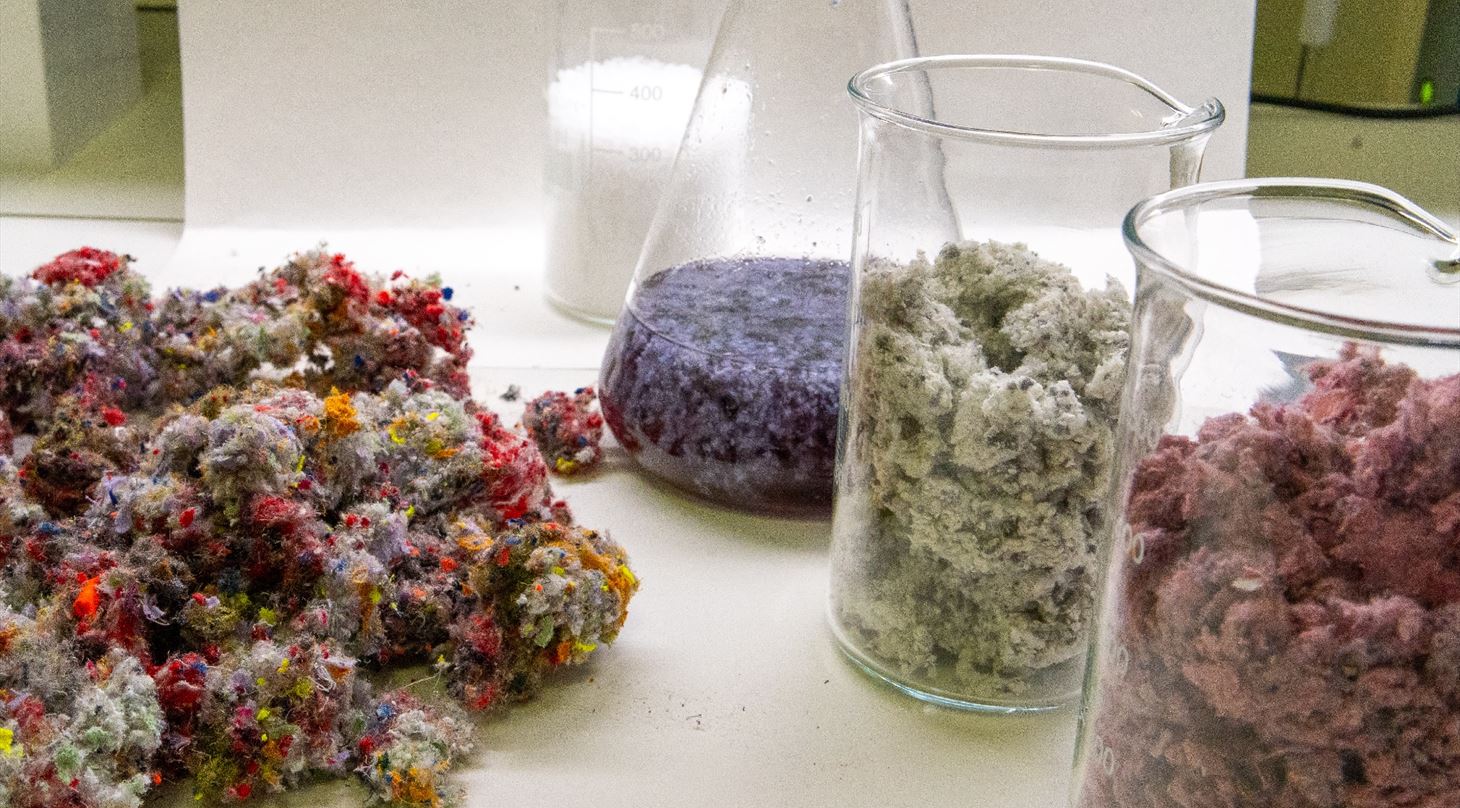
Danish-led textile project sets new standards for the recycling of textile waste
In three years, Denmark's first major textile project, ReSuit, has developed processes that can convert polyester in textile waste into new raw materials and defined new standards for future circular clothing design.
More clothes designed for recycling and new technologies that can transform clothing waste into new textiles. These are the main ambitions of the ReSuit textile project, which has been working for three years to develop new solutions in a partnership that includes researchers, design specialists, behavioral experts and textile, fashion, and recycling companies.
- ReSuit is the first major textile project where actors across industries and disciplines have joined forces to find solutions for the green transition of the clothing and textile industry. The task is complex, but we have come further than we had dared to hope for. And we have shown that large, interdisciplinary partnerships are the way forward in the green transition, says Project Manager Jeppe Holmehave from Danish Technological Institute.
New process transforms old polyester into new
An important focus of the project has been polyester, which makes up more than half of all clothing fibres worldwide. In collaboration between Aarhus University, German Fraunhofer, and Danish Technological Institute, two processes for recycling clothing waste have been developed.
One, known as a dissolution, can separate polyester from textile waste and remove colors and additives. The result is recycled polyester (rPET) of such quality that it can be used in new polyester. Specifically, it has been possible to spin new polyester thread with 40 percent rPET.
The technology to recycle polyester is still under development, but already now it seems possible to do so with a significantly smaller environmental footprint. This could pave the way for textile-to-textile recycling of polyester.
Complex clothing waste is converted into raw materials
The second process is a potential solution for how to recycle complex clothing waste - textiles that are so complex and processed that they are currently considered unsuitable for recycling.
In ReSuit, successful experiments have been conducted in which textile waste, under the influence of heat and pressure, also known as hydrothermal liquefaction (HTL), is converted into a bio-oil that can be upgraded into chemical building blocks for fuel and naphtha production. The polyester part of the waste is converted into so-called terephthalic acid (TPA), which is the primary building block of polyester.
- HTL has proven to be an effective way to recycle the most difficult-to-recycle textile waste. The fact that we can convert this into new raw materials is a breakthrough. The price of the materials must be competitive, and we expect that further upscaling and improvement of the technologies will pave the way for circular raw materials that can compete in the market," says Associate Professor Patrick Biller from the Department of Biological and Chemical Engineering at Aarhus University.
New standards for circular clothing design
Alongside the technological development work, BESTSELLER, Design School Kolding and the textile service company Elis have been working on setting new standards for clothing design that has a longer lifespan and can be recycled the day the clothes are discarded. One concrete result of this work is BESTSELLER's circular design guide, which aims to inspire both BESTSELLER's own brands and the rest of the textile industry to think and act in new ways that extend the life of the clothes and make them easier to recycle. Among other things, BESTSELLER now sells clothing collections designed according to the principles of the design guide.
- At BESTSELLER, we are fully aware of the challenges facing the fashion industry, but we also have the size and expertise to be part of the solution. That's why we entered ReSuit with open eyes and an understanding that innovation plays a crucial role in the transition of the fashion industry to a more sustainable industry. Innovation is best realized in collaboration with other stakeholders. That's why ReSuit is a unique project that takes a holistic approach to the problem by looking at all stages of the clothing lifecycle - from the design phase to the use and recycling phase. This focus on the entire process is crucial to creating a more sustainable future in the fashion industry, says Camilla Skjønning Jørgensen, Materials & Innovation Manager at BESTSELLER.
ReSuit is supported by Innovation Fund Denmark and is a collaboration between Aarhus University, Danish Technological Institute, Fraunhofer, Crossbridge Energy, BESTSELLER, Elis, Behave Green and Design School Kolding.
Professional contact
- Jeppe Holmehave, Project Manager, Danish Technological Institute, mail: jhol@dti.dk, mobile: +45 7220 1814.
Press Contact
- René Wad Andersen, Senior Communication Consultant, Danish Technological Institute, mail: rea@dti.dk, mobile: +45 7220 1474.